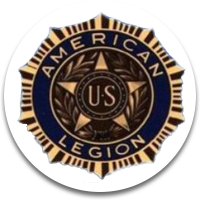Message From Our Chaplain
Solon American Legion Stinocher Post 460
Veteran-Owned and Serving You Since 1902
At Solon American Legion Stinocher Post 460, we know how much it means to serve. As a veteran-owned organization, we are committed to meeting the needs of those in our community. We’ve been open since 1902, and that means we’ve spent over 120 years helping people right here in Solon, IA.
As part of our mission, we are open to the public for meals, special events, and more. To learn more about Solon American Legion Stinocher Post 460 and what we’re all about, read this recent letter from our chaplain from December 2024.
A Message From Chaplain Doug Thompson
“I wish I had one of those blue-eyed murderers in my sight!” These were the words spoken by Hanoi Jane as she sat in the gunner's seat peering down the sight of a North Vietnamese anti-aircraft gun. Jane was a rising Hollywood celebrity who proudly and openly supported the North Vietnamese communist government and was very vocal about her anti-American views. She used her notoriety to support our nation's enemy while expressing her hatred towards Americans serving in the military. However, not all of Hollywood's elite followed Hanoi Jane's path to Vietnam. Raquel Welch, Ann-Margret, Jim Nabors, Vic Damone, James Brown, Sammy Davis Jr, Redd Fox, Bob Hope, Phyllis Diller, Jonathan Winters, Joey Heatherton, and many more also arrived in Vietnam to bring entertainment to the U.S. military personnel. Most famous were the USO Christmas shows hosted by Bob Hope and a cast of singers, dancers, and comics. Bob Hope's Christmas shows brought moments of respite from the drudgery of war. These shows were also televised back in the States, bringing maybe a little hope to the families as the camera panned across the faces of the young men and women who sat in the audience.
Among the luminaries that came to Vietnam to entertain the troops, none was as bright and beloved as Colonel Maggie, better known as Martha Raye. Colonel Maggie loved being with the American soldiers stationed in Vietnam, especially the 5th Special Forces Group, better known as the Green Berets. Martha Raye was a comic, singer, and actress on stage, radio, motion pictures, and TV. Her USO tours began in World War II, continued into the Korean War, and ended in Vietnam. She also had another talent that she put to use during her USO tours in all three wars; she was a trained nurse's aid. When casualties started pouring in, she rolled up her sleeves and pitched in, putting her training and experience to good use. She helped to stanch bleeding, transported patients to and from surgery, and did dressing changes. She never shied away from the hardest job of all, bringing comfort by holding the hand or cradling in her arms young men as they took their last breath.
Colonel Maggie had been given the honorary rank of Lieutenant. Colonel by both the Army and the Marine Corps during World War II. Even though it was only an honorary rank, she would pull rank sometimes to make sure the wounded and the men would get the things they needed. She also slept and stayed in areas that were prone to enemy attacks. She always felt it was her duty to stay with her boys, no matter what the dangers, and by doing so, she, too, was eventually wounded. With pride, she wore her green beret and her subdued honorary rank on the same combat uniform as her boys. Colonel Maggie was one of a kind, to say the least.
In November 1993, President Clinton presented Martha Raye with the Presidential Medal of Freedom, the highest award that can be bestowed upon a civilian. Just less than a full year later, Martha “Colonel Maggie” Raye passed away due to Alzheimer's complications. However, even in death, Colonel Maggie would receive two more honors. Though a civilian, she received a full military burial service, and she is the only woman buried in the Special Forces cemetery at Fort Bragg.
Colonel Maggie Raye was indeed a sharp contrast to Hanoi Jane Fonda. Maggie used her notoriety to bring aid and comfort to US servicemen fighting in a war to stop the spread of communism. It is my sincere wish that this holiday season fills your life with Colonel Maggies.
Doug Thompson, Chaplain

Share On: